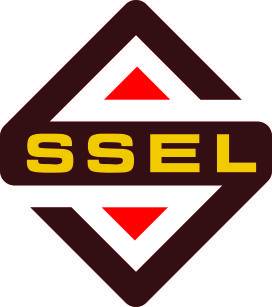In fast-moving environments, quick thinking transforms fleeting moments into meaningful innovation. It is not merely reacting fast, but activating rapid cognitive responses that enable adaptive problem-solving when conditions shift unexpectedly. This agility allows individuals and teams to pivot beyond rigid plans, turning uncertainty into opportunity.
The Psychological Edge: Neural Pathways Under Pressure
Research in cognitive neuroscience reveals that experienced problem-solvers develop intuitive pathways that allow near-instantaneous adjustments—such as a driver rerouting around traffic or a parent adjusting a child’s schedule with minimal delay. This neural flexibility turns routine challenges into catalysts for innovation.
Beyond Crisis: The Rise of Micro-Innovations
For instance, adjusting a coffee brewing time based on mood or simplifying a grocery list by combining ingredients reduces waste and saves minutes daily. These micro-shifts accumulate, creating sustained momentum and setting the stage for larger innovations.
- Micro-innovations include:
- Swapping a commute for walking when weather permits
- Using a reminder app to reduce forgotten tasks
- Repurposing old tools instead of buying new ones
- Set timed challenges: solve a puzzle or plan a task in under 90 seconds
- Keep a micro-innovation journal: note small changes and their impact
- Practice “yes, and…” improvisation in conversations to expand thinking
- Adjusting commutes based on weather
- Using reminders to reduce forgotten tasks
- Repurposing household tools
«Automata» as a Modern Catalyst for Adaptive Thinking
In daily life, this means embracing rapid prototyping: testing a recipe with spare ingredients, adjusting a meeting agenda on the fly, or repurposing a device before official updates arrive. These behaviors mirror the responsiveness seen in automated systems—efficient, flexible, and resilient.
Real-World Drivers of Everyday Innovation
Home chefs improvise with limited ingredients, transforming constrained pantries into creative kitchens. A missing spice becomes a flavor catalyst; a vegetable shortage sparks a new dish. These improvisations, born from instinct and resourcefulness, mirror the essence of adaptive innovation.
Tech users frequently customize apps before official updates, leveraging customization tools, third-party extensions, and online communities to tailor functionality. This pre-emptive tinkering accelerates personal workflows and feeds broader design improvements.
| Scenario | Innovation Trigger | Outcome |
|---|---|---|
| Spontaneous route change due to road closure | Utilizing real-time navigation and local insights | Minimized delay, discovered hidden shortcuts |
| Limited ingredients in a recipe | Improvisation using accessible substitutes | New flavor combinations, saved meal |
| App feature gap before official release | Community hacking, unofficial workarounds | Enhanced user experience, market pressure for official support |
Hidden Trade-Offs: Speed vs. Accuracy
Emotional resilience grows through frequent rapid problem-solving, training the mind to stay calm amid chaos. Yet, institutional structures can either amplify or hinder this agility: rigid hierarchies may suppress experimentation, whereas flexible environments reward adaptive behavior.
Cultivating Quick Thinking for Everyday Innovation
Developing quick thinking isn’t just about fast reactions—it’s a mindset cultivated through deliberate practice. Embracing failure as a feedback loop replaces fear of mistakes with learning momentum. Daily reflection prompts encourage metacognition: asking, “What worked? What could shift next?”
Practical exercises include:
Systemic support strengthens adaptive behavior. Tools like interactive apps, flexible workspaces, and collaborative environments reward experimentation—not just outcomes. When organizations value agility, quiet innovations multiply into cultural momentum.
“Innovation is not the domain of the perfect plan, but of the quick to adapt.”
Final Insight
Quick thinking is not a talent reserved for emergencies—it’s a skill that turns daily chaos into creative fuel. By embracing micro-innovations, learning from real-world examples like urban navigation and culinary improvisation, and supporting agile mindsets, we unlock a sustainable engine for progress. As the link shows, automated systems exemplify this responsiveness—reminding us that true innovation thrives at the intersection of human instinct and adaptive design.
Table of Contents
1. The Power of Quick Thinking in Driving Everyday Innovation
Quick thinking fuels adaptive problem-solving by activating rapid cognitive responses in dynamic environments. It enables flexible, creative solutions that rigid planning often misses.
2. Why Quick Thinking Matters Beyond Crisis Moments
Micro-innovations—small, immediate adjustments—improve routines daily. From re-routing during disruptions to improvising recipes, these behavioral triggers spark incremental progress driven by instinctive experimentation.
Early decisions create cognitive momentum, shaping future opportunities and constraints. Recognizing this helps turn fleeting moments into lasting change.
3. The Role of «Automata» as a Natural Catalyst
Like automated systems that adapt instantly to inputs, human quick thinking embodies responsiveness. It functions as a metaphor for adaptive design and a tool for rapid prototyping, reinforcing a mindset that values agility over perfection.
4. Real-World Examples Where Quick Thinking Drives Innovation
- Micro-innovations include:
Urban navigators reroute dynamically during disruptions; home chefs improvise with limited ingredients; tech users customize apps before official releases—each illustrating how speed becomes a catalyst for creative adaptation.
5. Non-Obvious Dimensions: The Hidden Costs and Rewards of Speed
Trade-offs exist: speed risks accuracy, but emotional resilience grows through frequent rapid problem-solving. Institutions shape whether agility flourishes—supportive environments reward adaptive behavior, while rigid structures may suppress innovation.
Cultivating Quick Thinking for Everyday Innovation
Developing rapid problem-solving is a mindset shift—embracing failure as feedback and practicing daily reflection. Exercises like timed challenges and improvisation build metacognition. Systemic support through adaptive tools and flexible spaces turns individual agility into collective momentum.
As the link shows, automated systems exemplify dynamic responsiveness—reminding us innovation thrives when human instinct meets adaptive design. Cultivating quick thinking isn’t just about speed; it’s about shaping a resilient, creative mindset for life’s unpredictable moments.



